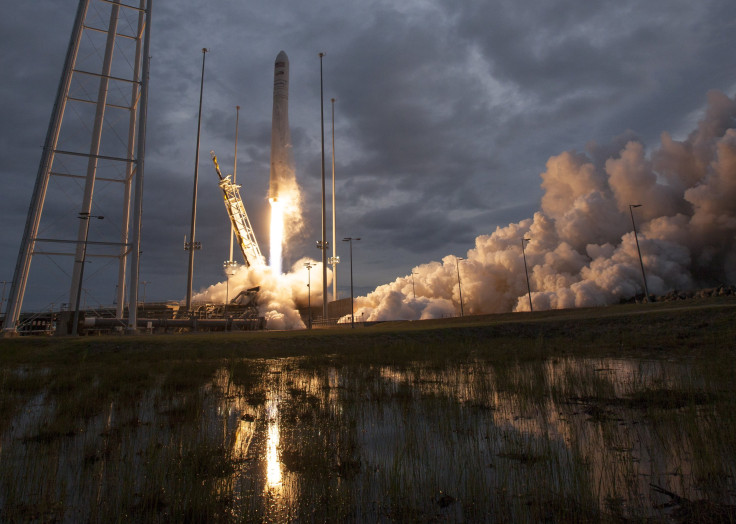NASA Launch Creates Ethereal-Looking Light Show [Photos]
KEY POINTS
- Many viewers caught a glimpse of a bright, orb-like light in the sky Monday
- It was due to the launch of the S.S. Sally Ride Cygnus spacecraft
- The cargo spacecraft is bringing research and crew supplies to the ISS
Early risers were treated to a stunning sight Monday after a NASA launch to the International Space Station (ISS) created a rather ethereal-looking glow.
Fireballs always provide incredible views that stun those who catch a glimpse of them. But the sights on Monday night weren't quite like the other "fireballs" that brighten up the skies.
In photos shared on social media, one can see the stunning orb-like light looking rather other-worldly as it glowed in the dark, early morning skies.
#sallyrideiss @NASA pic.twitter.com/u4s1UafN9z
— Stephen Colangelo (@sjcpilot4) November 7, 2022
"It seemed to be moving quick with a burning ball in front of it," a viewer told WRAL.
Launch from Wallops lights up the OBX sky https://t.co/Bbndm3VEbp pic.twitter.com/2tG3YQuzig
— Outer Banks Voice (@OuterBanksVoice) November 7, 2022
Another photo shows the view over Wrightsville Beach.
REASONS TO LOOK OUT!Kudos to Larry Marshall for this capture of the SS Sally Ride cargo ship and Antares rocket ascending over Wrightsville Beach toward the International Space Station. NASA's...
What the bright light is, however, isn't exactly a mystery, as NASA had announced the impending Northrop Grumman launch of the Antares rocket with a Cygnus cargo spacecraft.
"We're just 10 mins away from the launch of the Antares vehicle carrying the Cygnus spacecraft full of supplies to the Space Station," the agency tweeted. "Launch time is now 5:32 am ET. For those in the mid-Atlantic region, you may catch a glimpse of the rocket across the sky."
It even shared the areas where people may just catch a glimpse of the event.
Antares is ready! 🚀 We’re just 10 mins away from the launch of the Antares vehicle carrying the Cygnus spacecraft full of supplies to the @Space_Station. Launch time is now 5:32 am ET.
— NASA Wallops (@NASA_Wallops) November 7, 2022
For those in the mid-Atlantic region, you may catch a glimpse of the rocket across the sky. pic.twitter.com/gUNCwCPDqe
Sure enough, the launch pushed through and lifted off from NASA Wallops Flight Facility at 5:32 a.m. EST. And this particular launch is rather special, as the Cygnus spacecraft for the mission was dubbed the S.S. Sally Ride, after the first American woman to go to space.
We have liftoff! 🚀
— NASA (@NASA) November 7, 2022
The S.S. Sally Ride spacecraft, named after the first American woman in space, has launched from @NASA_Wallops at 5:32am ET (1032 UTC). #CRS18 pic.twitter.com/jNWpne9aPJ
The launch was initially scheduled for Sunday but was scrubbed due to a fire incident at the Northrop Grumman spacecraft control center in Virginia, though the Cygnus spacecraft and Antares rocket were safely tucked at the Wallops launch site.
The Cygnus spacecraft was carrying over 8,000 pounds of research, hardware and supplies for the ISS crew. These include investigations on how microgravity affects ovary function and another that looks into how plants adapt in space.
It is also carrying the TAKA satellite from Japan, as well as the first satellites developed by Uganda and Zimbabwe: the PEARLAFRICASAT-1 and the ZIMSAT-1.
S.S. Sally Ride is expected to arrive at the ISS Wednesday.

© Copyright IBTimes 2025. All rights reserved.






















